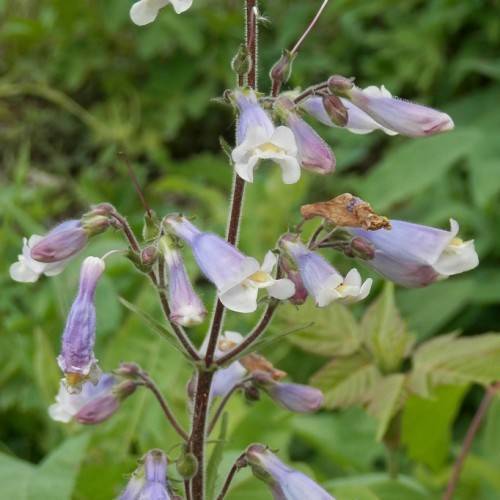
Hairy Beardtongue
Penstemon hirsutus
Cycle:
Perennial
Watering:
Average
Hardiness Zone:
Sun:
Full sun Partial sun
Soil:
Sandy,Loamy,Rocky
Leaf:
Yes
Growth Rate:
Low
Drought Tolerant:
Yes
Care Level:
Medium
watering
Hairy Beardtongue should be watered once a week, with enough water to moisten the soil to a depth of 2 to 6 inches. Water deeply but avoid saturating the soil as this can lead to root rot. Never allow the soil to dry completely. Water early in the day, when the temperatures are cooler, to reduce evaporation. During hot summer months, the plant may require more frequent watering. Make sure to supplement with rainwater if natural rainfall is low.
sunlight
Hairy Beardtongue (Penstemon hirsutus) is native plants that thrive in full sun or partial shade. For best blooms and growth, they need at least 6 hours of direct sunlight per day. However, in especially hot climates, they may require some afternoon shade to help prevent wilting and leaf burn. As a native species, Hairy Beardtongue is adapted to the seasonal periods of sun exposure in its native range. In summer, the plant will enjoy the long days of direct sun. As the sun’s intensity weakens in autumn, the plants can still benefit from the shorter hours of sun. When temperatures become colder in winter, Hairy Beardtongue typically goes into a dormant state that lasts until after the last frost, when it can safely resume growth in response to the increasing hours of sunlight as spring arrives.
pruning
Hairy Beardtongue (Penstemon hirsutus) should be pruned in late spring or early summer, after flowering, to promote and maintain the best shape and vigour of the plant and to keep overall shape in control. Specifically, remove spent flower stalks at the base of the plant, and pinch back the tips of the shoots to encourage bushier growth. Also remove any dead, damaged and crossing branches which can impede growth of the other limbs. Prune any lateral branches that have grown too long or interfere with the desired shape. Generally speaking, do not prune the plant more than a third of its total growth in a single pruning session.
